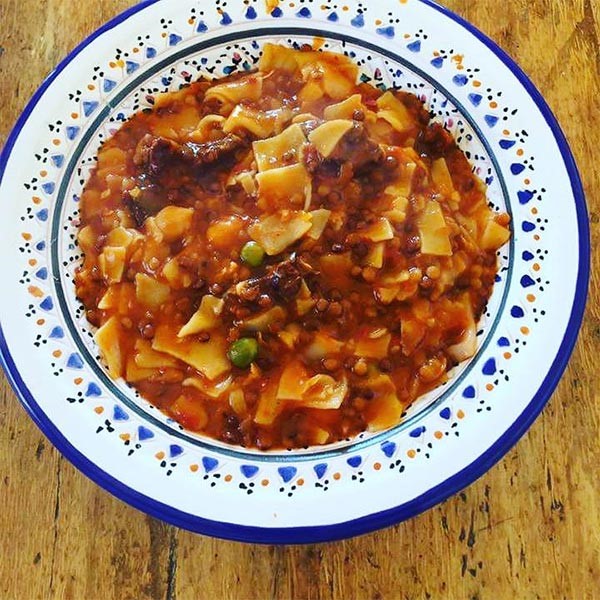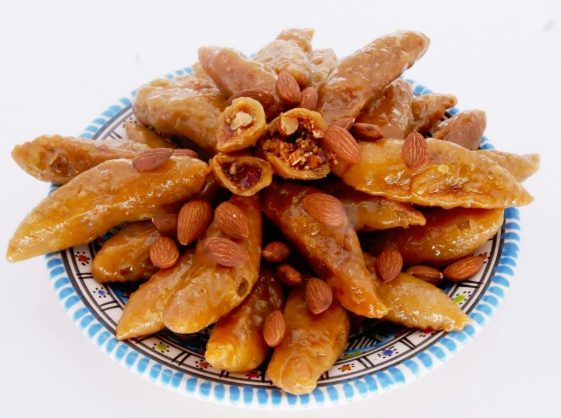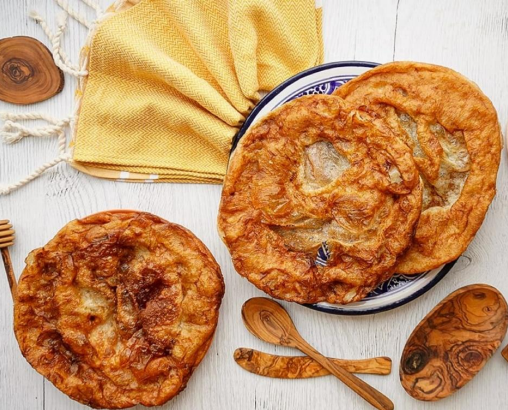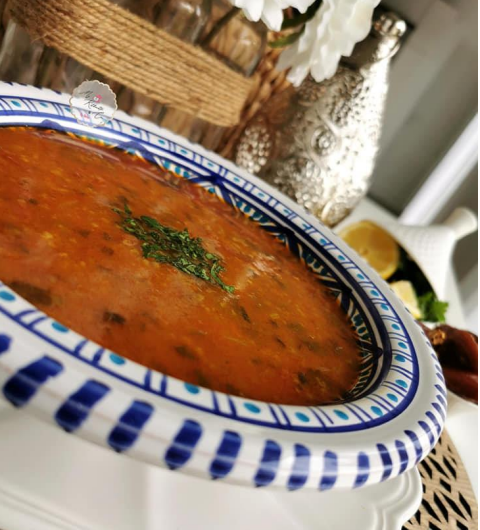Cultural heritage is a vector of attraction for responsible and ethical tourism in Dahar
The Culinary Route of Tunisia is the road of all those, professionals and enthusiasts, who take part and share their experiences and points of view. We have met Mohamed Sadok Dabbebi, President of the Fédération de Tourisme Authentique Destination Dahar (FTADD), who explained the economic opportunities that the development of culinary tourism represents for his region.

When was the DMO Dahar created, and what were its objectives?
DMO Dahar was created in March 2018. Its aim is to develop tourism in the Dahar region of south-eastern Tunisia. DMO Dahar is a private organization that works closely with local authorities, tourism professionals and local residents.
The objectives of the Dahar DMO are as follows:
- Promote the Dahar region as a leading tourist destination;
- Develop the region’s tourism offering;
- Improving the quality of tourism services;
- Promoting the region’s culture and traditions;
- Creating jobs in the tourism sector;
- Contribute to the region’s economic development.
DMO Dahar has already completed numerous projects, including :
- The creation of a website and Facebook page to promote the region;
- Organizing conferences and events to attract tourists;
- Setting up a training program for tourism professionals;
- The creation of a tourist guide to the region;
- The creation of an exceptional Topoguide, an epic 194 km adventure that came to life thanks to the Fédération de Tourisme Authentique Destination Dahar (FTADD). We are proud to present the Grande Traversée du Dahar, a unique and captivating product.
- Participation in tourism trade shows and fairs.
- Dahar’s distinction in the Green Destination TOP100 competition, ranked as the world’s leading destination on the theme of “Culture and Community” in 2021.
As the 1st DMO created in Tunisia, it has become a leading tourist destination, providing a specific and stimulating tourism offer, capable of creating jobs and economic opportunities for the region’s inhabitants.
What are DMO Dahar’s main missions?
The DMO Dahar plays a multifaceted role in promoting and developing the Dahar region as a first-class tourist destination. Its key missions are as follows:
- Promotion and visibility: the DMO Dahar is committed to raising the profile of Dahar as a
destination for the widest possible audience. She develops and runs strategic communications campaigns, using channels such as social media, dedicated websites and collaborations with influencers in the field. - Enhancing the tourism offering: the constant improvement of tourist attractions and activities is one of the DMO’s priorities. It works in collaboration with local service providers to diversify and enrich the range of experiences on offer to visitors.
- Service quality: the DMO Dahar strives to raise service standards for passengers. It sets up accreditation programs, training courses and workshops for players in the tourism sector, with a view to improving the quality of accommodation, catering and related services.
- Support for local culture: preserving and promoting the region’s traditions and cultural heritage are among the DMO’s key missions. It encourages local cultural initiatives and events, providing visitors with an authentic, immersive experience.
- Job creation and economic development: by encouraging the arrival of tourists, the DMO Dahar contributes to job creation in the region. This includes opportunities in hotels, restaurants, leisure and related activities, all of which strengthen the local economy.
- Partnerships and synergies: the DMO plays a coordinating role, fostering partnerships between the various players in the tourism industry, including businesses, government institutions and local associations. This aims to align efforts towards sustainable tourism growth that benefits the community.
How would you describe the assets of the Dahar region?
The Dahar region, a jewel in the southwest of Tunisia, boasts a captivating array of assets that make it a must-see tourist destination. Its elusive charms are revealed in a harmonious panorama of landscapes, cultures and unforgettable experiences.
- Breathtaking scenery: the Dahar enchants visitors with its spectacular landscapes. From rolling mountains to vast stretches of desert, every corner offers breathtaking panoramas. Majestic rock formations, verdant oases and breathtaking desert views create a backdrop of immeasurable beauty.
- Cultural richness: Dahar’s historical and cultural roots go back to ancient times. Age-old traditions and local crafts intertwine to weave a lively tapestry of daily life. Colorful markets, traditional festivals and unique artistic expressions immerse visitors in an authentic, immersive experience.
- Architectural heritage: the region is home to architectural remains that bear witness to its eventful history. The ksours (fortified villages) and troglodytic houses reflect an ingenious symbiosis between man and nature. These emblematic structures transport travelers through the ages, arousing fascination and wonder.
- Warm hospitality: the people of Dahar welcome visitors with sincere and warm hospitality. Interacting with locals allows us to capture local life, share stories and taste traditional cuisine, reinforcing the human bonds at the heart of the travel experience.
- Unique adventures: the Dahar offers a range of experiences for adventurers and nature lovers. From camel rides in the golden dunes to trekking through the mountains and 4×4 expeditions in the desert, every moment is an opportunity to experience new and memorable sensations.
- Spiritual retreat: the Dahar is also home to places of spirituality and meditation, offering an escape conducive to reflection and quietude. Hermitages, sanctuaries and spiritual oases provide a sanctuary of tranquility in a hectic world.
In short, the Dahar region is a jewel box of natural, cultural and human treasures. Its magnetic landscapes, living heritage and welcoming atmosphere merge to offer a unique and spellbinding experience for travelers seeking adventure, discovery and a deep connection with the Earth and its people.

Why is cultural heritage important and what added value does it bring to the Dahar region?
Cultural heritage plays a fundamental role in the identity and influence of a region like the Dahar. It adds significant value to the region, both historically and in terms of tourism and economic development. Here’s how cultural heritage is of paramount importance and adds value to the Dahar region:
- Identity and history: cultural heritage embodies the history, traditions and values of a community. In the case of the Dahar, it bears witness to the centuries of existence, cultural exchanges and significant events that have shaped the region. Preserving this heritage is tantamount to maintaining a tangible link with the region’s roots, strengthening the sense of belonging of local residents and captivating the interest of visitors.
- Tourist attraction: cultural heritage is a unique attraction for visitors. Historic monuments, lively traditions, festivals and authentic artistic expressions are just some of the reasons why travelers discover the region. Cultural heritage creates a rich and memorable experience, encouraging tourism and contributing to the local economy.
- Differentiation and authenticity: in an increasingly standardized world, the cultural heritage of the Dahar offers precious distinction. It creates a distinct and authentic experience, differentiating the region from more commercial destinations. Increasingly, travelers are looking for unique, immersive experiences, something that the Dahar’s cultural heritage can brilliantly offer.
- Education and transmission: cultural heritage is a living teacher, transmitting information about history, customs, know-how and values. Current and future generations can learn from past experiences and become culturally enriched by understanding their heritage. Efforts to preserve and promote this heritage contribute to holistic education.
- Sustainable development: preserving cultural heritage can catalyze sustainable development. By enhancing local traditions and promoting environmentally-friendly practices, heritage can be a vector of attraction for responsible and ethical tourism, generating positive spin-offs for the region without compromising its resources.
- Local pride and social cohesion: cultural heritage fosters pride in the local community. Recognition and celebration of the region’s history and culture strengthens social cohesion, creating a sense of solidarity and mutual respect between inhabitants.
Cultural heritage therefore gives depth and substance to the Dahar region. It attracts visitors, forges local identity, encourages sustainable development and creates a unique and memorable experience. By preserving and enhancing this heritage, Dahar is investing in its future while honoring its past.
What are the most emblematic culinary specialities?
Steeped in Amazigh culture, one of the best ways to discover this region is through its gastronomy. The ingredients used in Daharan cuisine are farm-grown, and travelers are treated to fresh, locally-grown ingredients.
Here are 7 dishes not to be missed if you travel to Dahar!

Traditional breakfast di Dahar
Most Dahar guesthouses offer breakfast, and you won’t want to start your day with anything less than the traditional di Dahar breakfast. The typical breakfast includes freshly baked bread called tabouna, olive oil, honey, shriha (dried figures) and bsisa (barley flour mixed with spices and olive oil).
Krabiz
This Amazigh dish uses fresh wheat dough cooked in a thick, spicy sauce, flavored with kadid (salted, air-dried meat) and legumes such as chickpeas, lentils or broad beans. The village of Tamezret is particularly famous for its krabiz.


Gharbhouz
Gharbouz, also known as shriha, are dried figs and are an important foodstuff in the Dahar region. In fact, there’s an entire festival devoted to figs, the Gharbouz Beni Khdech Festival, which takes place in November. Figs are extremely important to Amazigh culture and grow with the help of jessours, sophisticated water structures used to collect rainfall in the dry climate. Dried figs are a great souvenir of the Dahar!
Gazelle horns
Sometimes called “gazelle pegs” or “Mahshi Tataouine”, these traditional North African cookies are shaped like a crescent. They are characterized by a flaky, buttery pastry and an almond flavor. Travellers can find these delicious cookies in Tataouine.


Ftayer
Ftayer is also known as the Tunisian doughnut. This is a circle-shaped fried bread usually eaten in the morning. A specialty widely practiced by the inhabitants of the Ghomrassen region in Tunisia and internationally (Ftayer Festival organized every year in ghomrassen).
Brik
Brik is a thin, salty dough that is fried and wrapped around a filling. Typical fillings are tuna, meat, egg or cheese. In Tunisia, brik is generally shaped like a triangle, and is best served with a squeezed lemon. Brik is a staple food during Ramadan.


Chorba
This is a traditional Tunisian soup, usually prepared during Ramadan. The soup is richly spiced and contains hearty ingredients to keep you energized on your travels.
Many of our guesthouse owners will be happy to offer you a unique culinary experience and share with you recipes handed down from generation to generation. For those wishing to take Dahar recipes home with them, cooking classes can also be organized.
What are DMO Dahar’s upcoming projects?
- Organization of a major “DAHAR EVENT” around the flagship product “La Grande Traversée Du Dahar”.
- Organization of training sessions for Dahar’s service providers and escorts on themes aimed at improving visitor services and enhancing the professional skills of our service providers.
- Participation in international tourism trade shows.
- Further develop the destination’s marketing strategy.
- Participation in future editions of the TOP100 Green Destination.
- Organizing the alternative tourism platform in the Southeast.